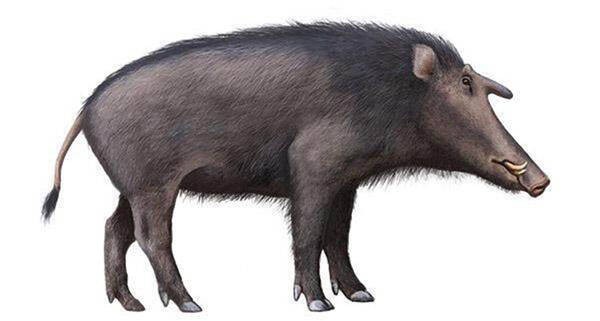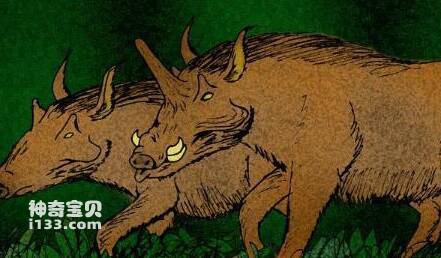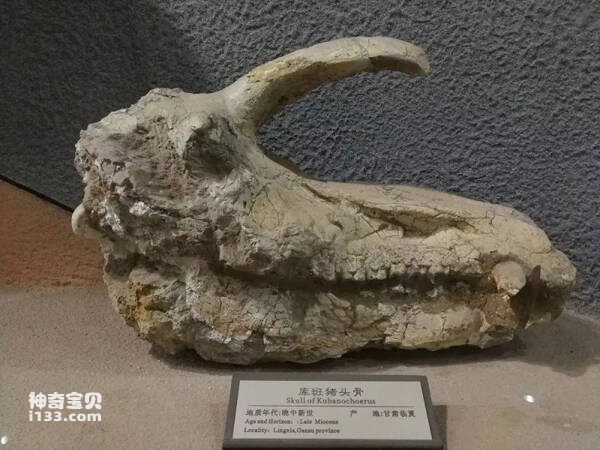kubanochoeres
IUCN
LCBasic Information
Scientific classification
- name:kubanochoeres
- Scientific Name:kubanochoeres
- Outline:Ungulata
- Family:
Vital signs
- length:About 2.5 meters
- Weight:500-800kg
- lifetime:No textual research information is available
Feature
It has a rather large horn, similar to the horn of the legendary unicorn
Distribution and Habitat
It lived in Eurasia between 20 and 10 million years ago during the Miocene epoch.
Appearance
The head is distinctive, with small horns on the eyes and larger horns on the forehead in males, which became extinct at the end of the Miocene epoch.
Details
kubanochoeres are a group of large, mound-toothed pigs that once lived in the Old World.

Kuban pig is a kind of huge pig that lived in the Old world during the Middle Miocene geological period. Because it has some unique characteristics, it plays an important role in the systematic evolution of pigs. In the world, the traces of Kuban pig were first found in Gansu province in China. The strangest thing about the Kuban pig is not its huge size, but its surprisingly large horn on its forehead, similar to the horn of the legendary unicorn. Later, fossils of Kuban pigs were also found in Africa, and the richest material of Kuban pigs has been found in large quantities in Tongxin, Ningxia and Hezheng, Gansu since the 1980s.

In 1928, Pearson, a foreign paleontologist, described some large teeth and limb bones fossils taken from "Pingpan Quantou Ditch" in Gansu Province (now part of Xiajie Village in Yongdeng County). Pearson found that the teeth were morphologically similar to a "sharp-toothed pig" fossil already found in Europe, only much larger. Pearson gave it a new breed named the "Giant Falcidon" (or Giant Falcidon). Later, Chinese scholars changed their name to Kuban Pig.

The fossil was measured to be 75.3 centimeters long, with a maximum width (eye socket) of 40.5 centimeters; The upper teeth are intact, with three incisors and one canine, the longest of which is 13.4 cm long.
According to the analysis of tooth characteristics, this is a highly specialized omnivorous animal. According to the characteristics of the fossil head, experts identified it as Kuban pig, living in the geological period of about 15 million years ago, Neogene Miocene, so far at home and abroad the most complete preservation of the giant Kuban pig head bone fossils.
There are less than ten Kuban pig fossils in the world, only two have been preserved abroad, and the rest are found in Ningxia, China. According to experts, its discovery is helpful to the attribution of this type of pig, solve the classification problem of the systematic evolution of Kuban pig, and has important significance for the study of the community morphology, paleogeography, paleoenvironment and paleoclimate evolution of the paleofunga in Linxia area during the Miocene.
Protect wild animals and eliminate wild meat.
Maintaining ecological balance is everyone's responsibility!








